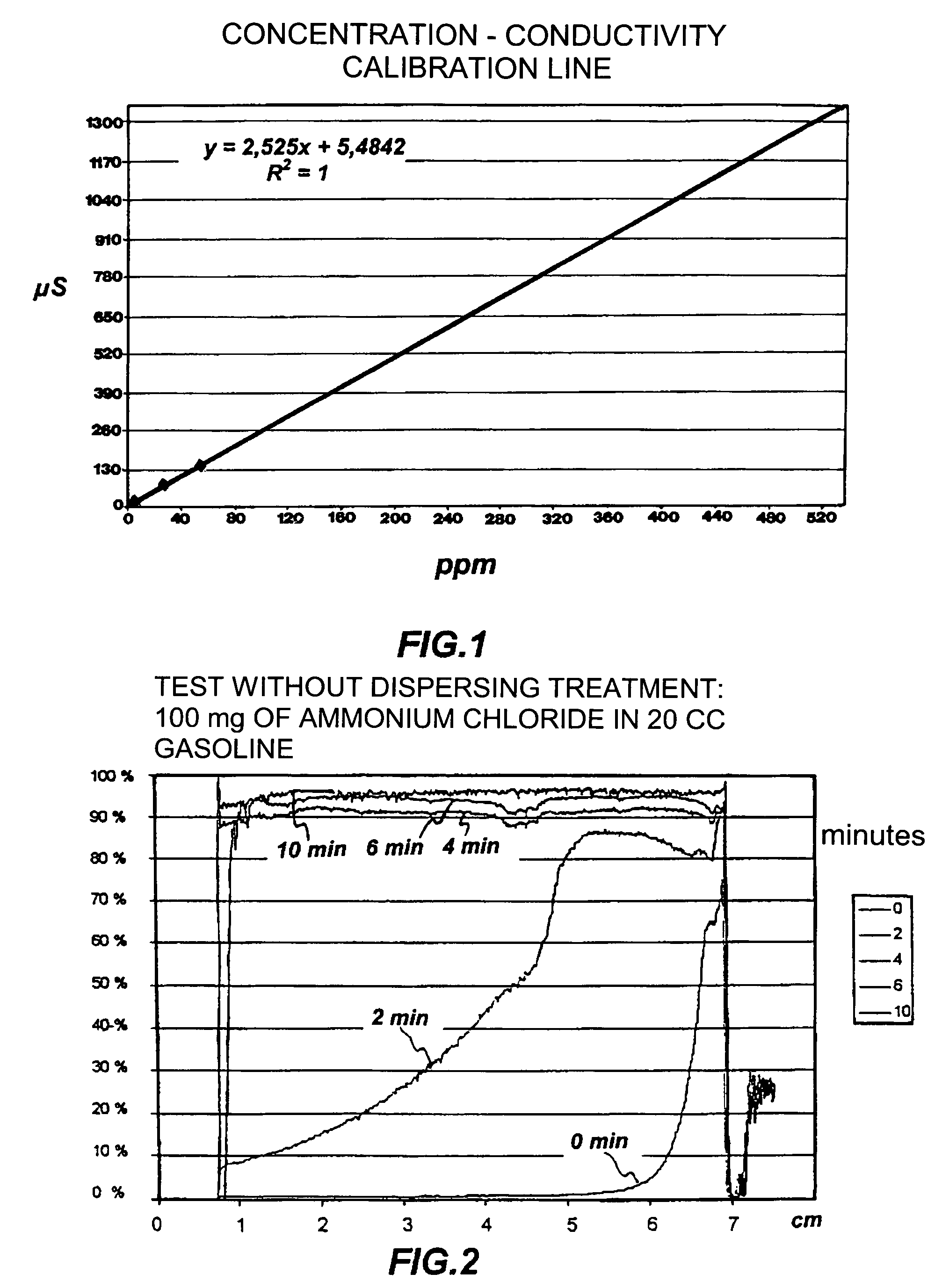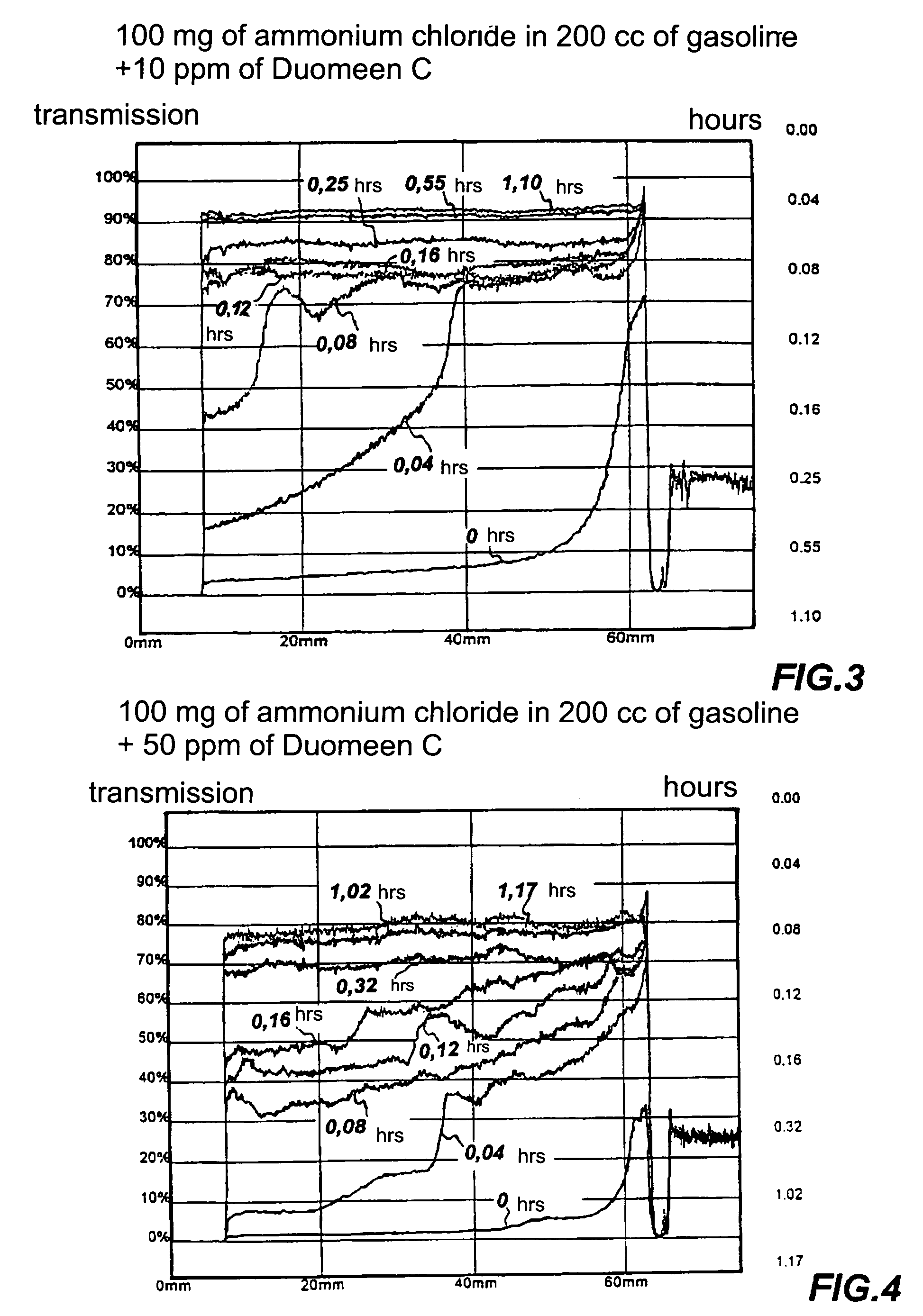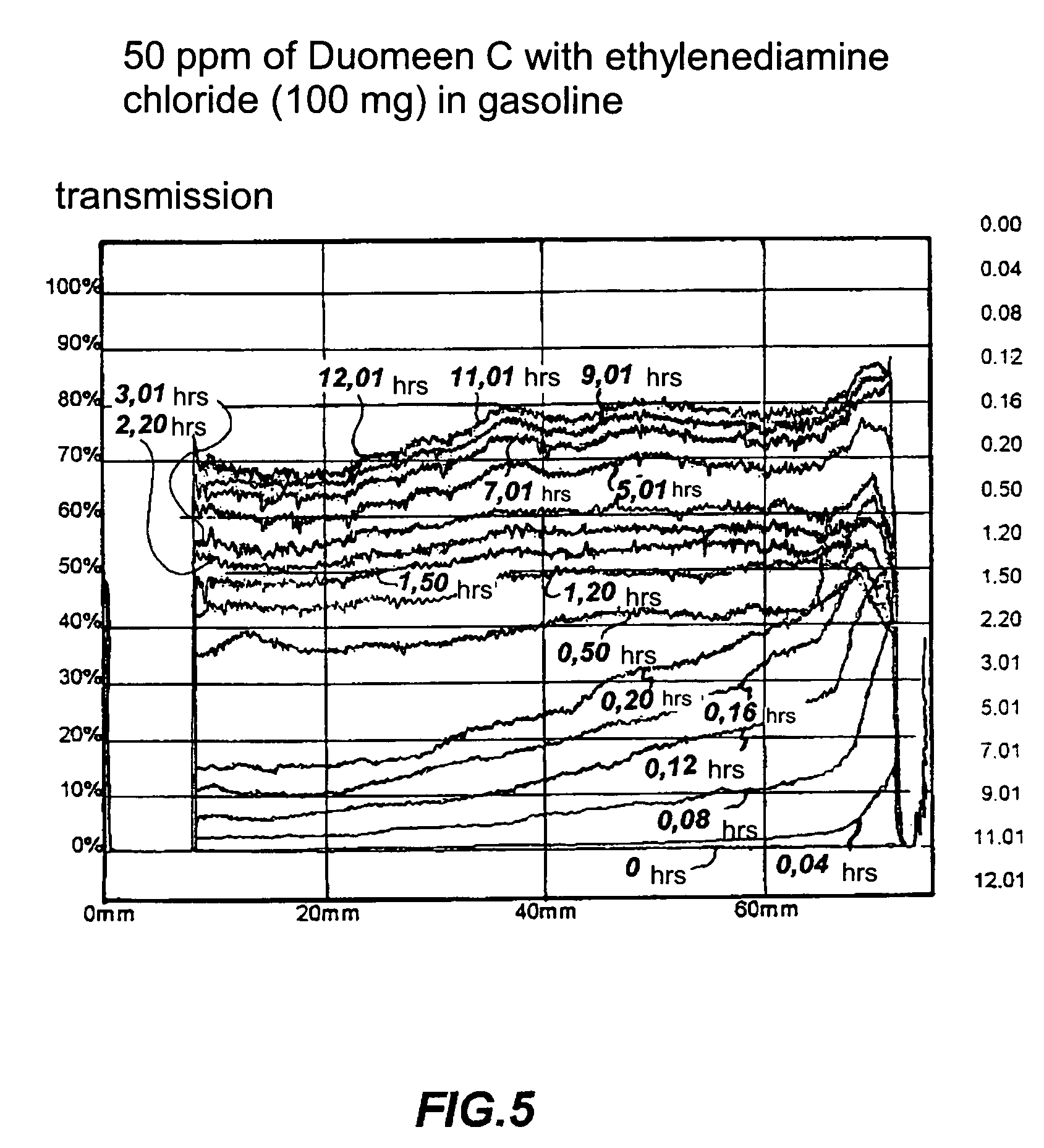Dispersant of saline deposits in hydrocarbon process plants
a technology of hydrocarbon process plants and saline deposits, which is applied in the direction of hydrocarbon distillation, hydrocarbon oil treatment, distillation corrosion inhibition, etc., can solve the problems of high risk of corrosion mechanism development, inability to change the operating conditions, and severe problems for the safety of the operation of the various process units
- Summary
- Abstract
- Description
- Claims
- Application Information
AI Technical Summary
Benefits of technology
Problems solved by technology
Method used
Image
Examples
example 1
Comparison Test, in Toluene / n-Heptane Mixture, After One Hour of Rest
[0059]
TABLE 2ConductivityConcentrationppm of additiveAdditive(μS)NH4Cl (mg / l)ppm of NH4ClDuomeen C12848.11.04(50 ppm)Imidazolina16222.22.25(50 ppm)Imidazolina27828.51.75(50 ppm)
[0060]Other concentrations of dispersant according to the invention were evaluated and shown in Table 3. It should be noted that with lower dosage the ratio between product and removed salt is still more favourable. Instead, between 50 and 100 ppm the quantity of dispersed ammonium chloride does not increase and clearly the ratio worsens sharply. This surprisingly demonstrates that a large quantity of additive according to the present invention is not necessary to obtain excellent efficiency results.
[0061]
TABLE 3ConductivityConcentrationppm of additiveAdditive(μS)NH4Cl (mg / l)ppm of NH4ClDuomeen C (5 ppm)6824.60.2032 (10 ppm)8932.80.3048 (25 ppm)10237.90.6596 (50 ppm)12848.11.0395(100 ppm)8631.63.1645
[0062]Table 4 below shows the results of t...
example 2
Series of Tests in LCO (Light Cycle Diesel Oil) After One Hour of Rest
[0065]The above tests were repeated using LCO as the dispersion fluid and the comparable results are shown in the tables that follow.
[0066]
TABLE 5ConductivityConcentrationppm of additiveAdditive(μS)NH4Cl (mg / l)ppm of NH4ClDuomeen C (50 ppm)21983.80.5966(100 ppm)3481340.7462(200 ppm)3411311.2567(400 ppm)4101582.53(800 ppm)4721834.3715
[0067]
TABLE 6ConductivityConcentrationppm of additiveAdditive(μS)NH4Cl (mg / l)ppm of NH4ClImidazolin 1 (50 ppm)12747.71.048(100 ppm)11241.82.388Imidazolin 2 (50 ppm)11141.41.207(100 ppm)20377.51.298(200 ppm)3001151.739(400 ppm)3481342.985(800 ppm)3641405.714
[0068]The results shown demonstrate the superior efficiency of Duomeen C as a dispersant according to the present invention with respect to the two comparison dispersant, particularly in relation to the use of lower dosages of the dispersant in a fluid that mimes different process conditions from those of example 1.
example 3
Series of Tests in LCO / One Hour of Rest with Granular Ammonium Chloride
[0069]The experiment with 800 ppm of Duomeen C was duplicated using ammonium chloride in granular form, instead of finely pulverised, as in the previous experiments, with the results shown in Table 7 below.
[0070]
TABLE 7ConductivityConcentrationppm of additiveAdditive(μS)NH4Cl (mg / l)ppm of NH4ClDuomeen C217839.6385(800 ppm)[0071]100 mg of granular NH4Cl
[0072]Although conductivity (and hence the quantity of dispersed salt) is lower than that obtained with the fine powder (Table 5 of Example 2), there is still significant dispersion. This is very important, because it demonstrates that the chosen dispersant is not only able to have preventive effect with respect to the depositing of small ammonium chloride particles, but it also attacks granular depositing, bringing a part of the salt to the hydrocarbon phase, even if it must be dosed in greater quantity.
PUM
| Property | Measurement | Unit |
|---|---|---|
| transmittance | aaaaa | aaaaa |
| length | aaaaa | aaaaa |
| transmittance | aaaaa | aaaaa |
Abstract
Description
Claims
Application Information
 Login to View More
Login to View More - R&D
- Intellectual Property
- Life Sciences
- Materials
- Tech Scout
- Unparalleled Data Quality
- Higher Quality Content
- 60% Fewer Hallucinations
Browse by: Latest US Patents, China's latest patents, Technical Efficacy Thesaurus, Application Domain, Technology Topic, Popular Technical Reports.
© 2025 PatSnap. All rights reserved.Legal|Privacy policy|Modern Slavery Act Transparency Statement|Sitemap|About US| Contact US: help@patsnap.com



